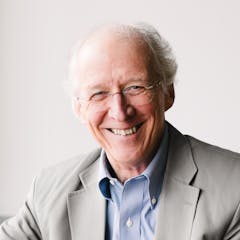An Overview of the History of Missions
(Based on Ralph Winter, The Kingdom Strikes Back: Ten Epochs of Redemptive History in Perspectives on the World Christian Movement)
Phase One: 1 – 400 Romans
Possibly Paul's work in Galatia established contacts with Gauls in the West and with other peoples in the northwest of Europe.
The earliest Irish mission compounds followed a ground plan derived from the Christian centers in Egypt, not from Roman centers with their central chapel. And the earliest language of Christians in Gaul was Greek, not Latin. Thus the spread of Christianity was not only by formal, systematic expansion from a Christianized Rome, but spontaneously through natural connections, for example, of trade and extended family.
By 312 there were enough Christians in the Roman Empire (in spite of extended and terrible persecutions) that it was politically feasible and wise for Constantine to reverse his own commitments and the policy of the state. He declares himself a Christian.
There was a need of cohesiveness in the Empire and Christianity alone of all the religions had no nationalism at its root. It had no geographic center. It was not racially specific.
By 375 Christianity was the official religion of the Roman Empire.
But there was no great push to evangelize the northern portions of Europe, even though they knew that these peoples were without the gospel.
Phase Two 400-800 the Barbarians
During the 100 years of peace for Christianity (310 to 410) there was little official church effort to evangelize the Barbarian nations to the north. Instead, the nominalism and ease of official Christianity did little to stem the tide of inner corruption in Rome and the Empire gave way to decay and invasion from Visigoths, the Ostrogoths, the Vandals, etc.
But the upshot of this was that the Romans lost the Western half of the Empire while the barbarians, in the real sense, gained a Christian faith.
During the 400 years after the fall of Rome, the Benedictine Christian order established 1,000 mission compounds all over the Western Empire. Traveling evangelists like Colomban (Irish) and Boniface (German) should not necessarily be judged along with the worldly and legalistic monks of Luther's day.
Toward the end of the period, Charlemagne arose as a kind of second Constantine. He espoused Christian ideals, but did not reach out in earnest missionary efforts to the frontiers of the north—the Scandinavians, the Vikings.
Phase Three: Vikings
The unevangelized peoples to the north invaded the comfortable, but non-evangelizing, Empire to the south. They were seafaring Vikings and took numerous island and coastland Christian centers. Unlike the partially evangelized Barbarians who invaded Rome, these raiders were totally unreached and destroyed churches, libraries and believers.
The Northmen cease not to slay and carry into captivity the Christian people, to destroy the churches and to burn the towns. Everywhere, there is nothing but dead bodies—clergy and laymen, nobles and common people, women and children. There is no road or place where the ground is not covered with corpses. We live in distress and anguish before this spectacle of the destruction of the Christian people. (Christopher Dawson, Religion and the Rise of Western Culture, p. 87)
But once again the power of Christianity showed itself. The conquerors became the conquered. Often it was the monks sold as slaves or the Christian girls forced to be their wives and mistresses who eventually won these savages of the north. "In God's eyes, their redemption must have been more important than the harrowing tragedy of this new invasion of barbarian violence and evil which fell upon God's own people whom He loved." (Winter, p. 148)
The churches and monasteries had become opulent in the second phase, and this is why the Vikings were so attracted to them. So there was a refinement that came to the churches as the devastation spread.
The faith spread back to Scandinavia.
The phase came to an end with another very powerful Christian man, Innocent III, but there was no missions thrust to the peoples beyond Europe.
Phase Four: 1200-1600 Crusades
The friars were a new evangelistic force, but the tragedy was the repeated efforts to take the Holy Land by force—the Crusades. This was a carry-over of the Viking spirit into the church—all the crusades were led by Viking descendants.
Francis of Assisi and Raymond Lull were bright exceptions to the Crusader spirit.
Judgment came this time on the empire not by human invaders, but in 1346 from the Bubonic Plague, which lasted for forty years. One-third to one-half the population of Europe died, and the hardest hit were the best (120,000 Franciscans in Germany alone), but not the Crusaders themselves. Winter suggests that the reason is that judgment was the removal of the best messengers of truth. This was a greater judgment on those left behind than on the good who died (p. 152.1)!
The recovery led into the Reformation and a final phase that sent the gospel around the world with the ships of trade and conquest.
See p. 151 for a good summary of how the four phases of expansion were judged at the end because of sitting on their blessings and not energetically sharing them with the unreached peoples of the world.
Phase Five: 1600-2000 - To the ends of the earth
See the three eras of modern missions.




